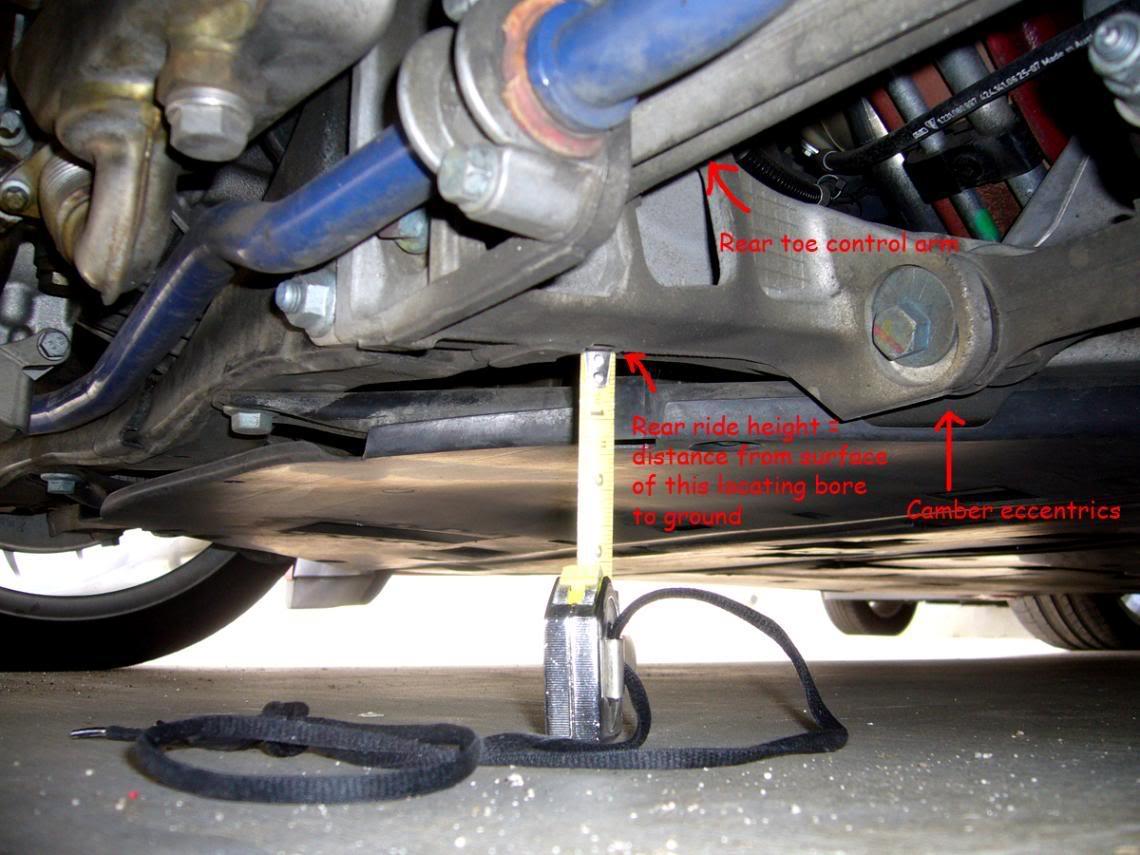You must be logged in to rate content!
8 minute(s) of a 612 minute read
2-6-2010
2-6-2010
I found this totally cool table
Automobile handling - Wikipedia, the free encyclopedia
Just looking at each scenario and trying to find the explanation is itself a complete basic education in car's handling :-). And check the part of the table that shows you could use tire pressure (within reasons of course!) to change understeer/oversteer behavior: front low pressure, rear high pressure, just like the anti-sway bar's stiffness, to reduce understeer.
I struggle to understand this concept at first and still do :-) but the key word is RELATIVE GRIP: Understeer/oversteer behavior is determined by the relative grip of tire, of the front relative to the rear tires. Let's use one example, how to decrease understeer: more grip in front RELATIVE to rear will decrease understeer/increase oversteer. It has to do with slip angle, more grip = less slip angle = less understeer. Now that you understand that, then know the other way around, more grip in rear relative to front, increases understeer/decrease oversteer.
Understeer is the front having not enough grip, RELATIVE to the rear. It kinda makes sense if you break down the word, under = less, steer = steering action of the front wheel, therefore understeer means the front is not doing the steering that it is supposed to do, from having less grip relative to rear. In a curve, an understeer car, with *under* *steering*, wants to go straight. An oversteer car wants to "steer" the front and swings the rear around. I hope I don't give everyone a headache here. ![]()
FWD and 4WD cars tend to understeer (because power applied to the front wheel increases slip angle, causing understeer), RWD cars tend to oversteer. Our Turbo is 4WD, hence it tends to understeer. I should add that while professional drivers tend to prefer either neutral or oversteer, understeer is in general safer for amateur drivers like me/us, and at amateur level it's anybody's guess whether each one of us is faster with understeer or oversteer (you have to test yourself at the track). In fact an oversteering rear engine car, like the 911, could be deadly dangerous. For years and years the 911 oversteers too much with the rear wanting to swing around (has to do with center of gravity of the 911 being towards the rear - this increases oversteer); Porsche engineers always try to reduce this and they finally succeeded in 2007, and I believe the 997 Turbo is the first 911 that actually understeers "too much," as come from factory. There are people who think Porsche overdid and dialed in too much understeer with our 997 Turbo.
I have become increasingly fond of the safety that our understeer 4WD Turbo provides. 2WD 911 such as GT3 and GT2 could feel "eerie" in the curves, same thing with my M3; powerful RWD cars with less understeer could feel, and be, very twitchy and temperamental, where the rear want to swing around and go in front of you :-). Anyway, I am not expert by any stretch of imagination :-), but above is how I understand this concept; anyone feel to correct me as needed.
So to summarize, what could you reasonably do to decrease understeer?
1. More front camber (Simple, effective, works! everyone should do this: increase front camber in stock Turbo to minus 1.2)
2. Softer front sway bar setting relative to rear
3. Softer front spring and shock absorber relative to rear
4. Softer front tire pressure relative to rear
5. Wider front tire
6. Front toe in
2-7-2010
Well now we know who WON'T be working with your Bilstein?![]() Just kidding. Porsche does it right but they target US dentists (kidding again & no offense intended), and therefore the stock Turbo behaves and sounds like a Lexus. The dealer might also change their mind if they know Bilstein also makes the OEM stock shock absorber so this is about as close to a factory approved mod as you could ever find.
Just kidding. Porsche does it right but they target US dentists (kidding again & no offense intended), and therefore the stock Turbo behaves and sounds like a Lexus. The dealer might also change their mind if they know Bilstein also makes the OEM stock shock absorber so this is about as close to a factory approved mod as you could ever find.
The difference in handling is on both curvy back roads and freeway, meaning always. The transformation will be startling. Don't forget to add front negative camber and consider slight front toe out.
The GIAC ECU mod is changed back to stock by a simple push of a button on a control module. I leave this module permanently connected to the OBD port so I could change it back and forth. There are a number of good ECU tunes out there, but I am the type who likes to compare (plus I want to make sure that the mod is unquestionably better than stock, and want to maintain stock mode) so this feature is a must for me.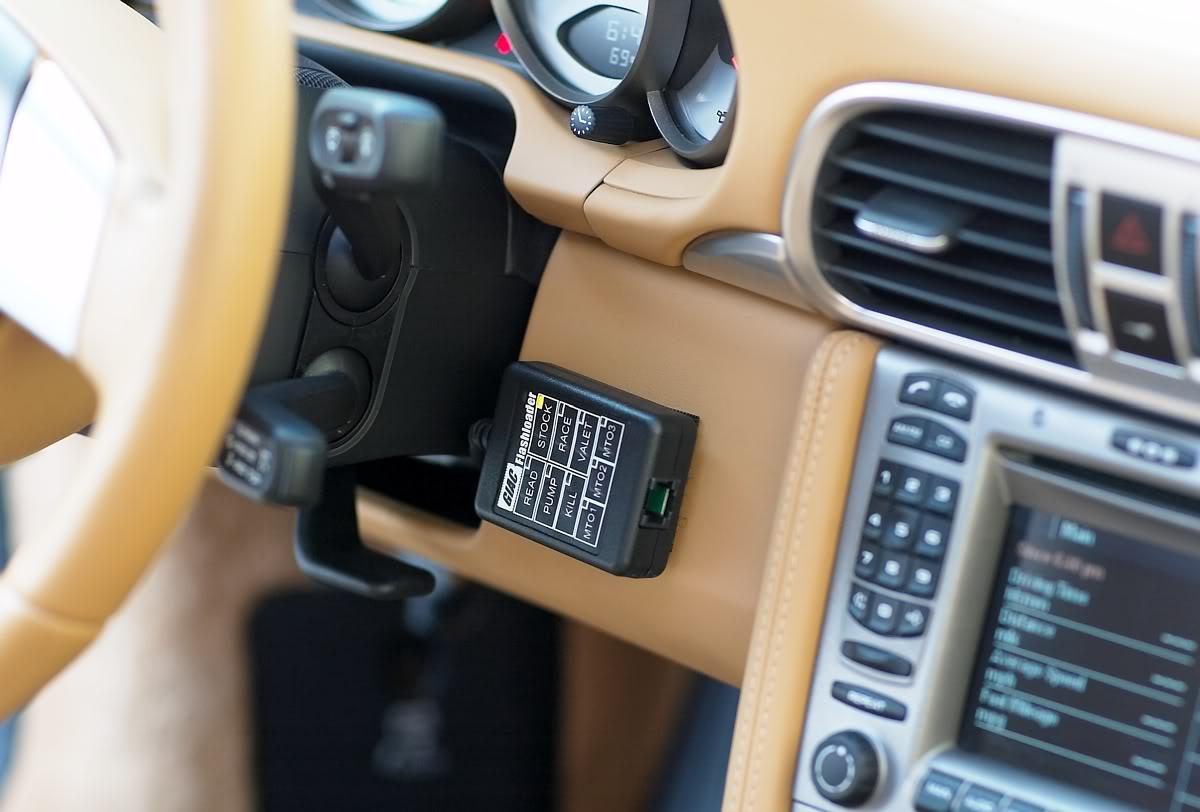
3-10-2010
I have been asked several times about ride height measurement so think it's time to share what I've learned, with pictures. That's right... everything you ever want to know about ride height measurement. ![]() As always, this has been a cooperative effort (Alex's tuner provided stock Turbo's ride height that I couldn't find anywhere else, bbywu posted the diagram, etc.) and thanks to all who have contributed. Any pro lurking, if you see any error, please let me know.
As always, this has been a cooperative effort (Alex's tuner provided stock Turbo's ride height that I couldn't find anywhere else, bbywu posted the diagram, etc.) and thanks to all who have contributed. Any pro lurking, if you see any error, please let me know.
Ride height is a most important parameter in suspension adjustment, yet the way that most of us measure it, fender height to ground, is grossly inaccurate. I too was guilty. The official way to measure is actually very simple and takes minutes. This is a key parameter to measure PRIOR to installation of the Bilstein. I did not do it and to this day wonder what my car's original ride height was.
FYI and one more important piece of info: For the Turbo, Bilstein's official recommendation is that ride heights be reduced 10mm-30 mm in the front, and 5mm-25mm in the rear. That is, they actually recommend that you do not use stock ride height, and that at least you should try to lower 5mm.
The risk of not lowering enough is coil bind, the risk of lowering too much (beyond 30mm) is hitting internal bump stops. Either would be a dangerous situation (very little or no compliance at all) in either situation.
If you stay within specs, then both dampening rates and spring rates should not change with ride height. In other words, in a properly installed Bilstein system, ride height doesn't change spring/damper/ride/compliance characteristic. Any change in handling would be from the advantage of lowered center of gravity, and not change in the coilover system per se.
Keep in mind also, that if you are to do corner balancing, the ride height might no longer be equal from corner to corner. This is because, AFAIK, corner balancing's goal is to make the weight/force at RF + LR = LF + RR, with driver weight in the car. And the way to make these sums equal is by adjusting the ride height at each corner.
So... to start first the official diagram from Porsche is below. Using this diagram the stock Turbo height should be 132 mm front/153mm rear, stock GT2 for comparison 110/147.
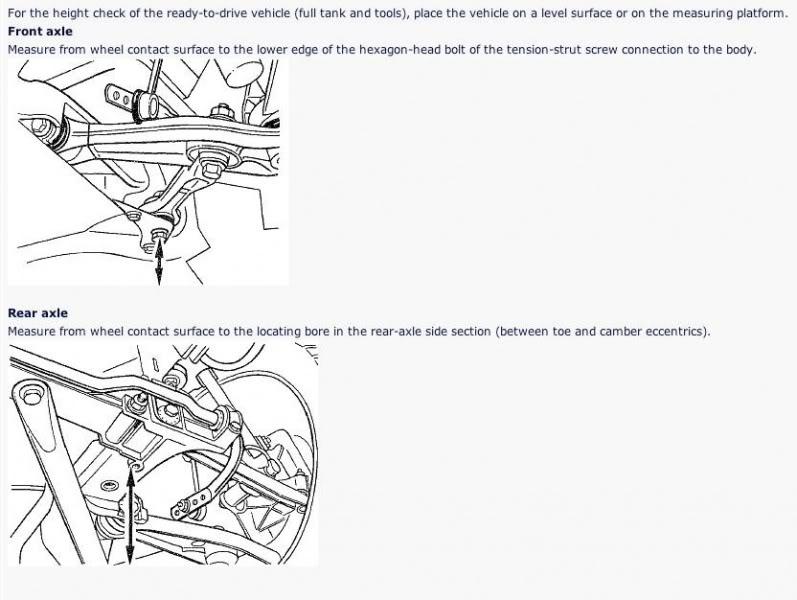
Front ride height is measured from this hexagon-shaped bolt, to the ground. The bolt is not visible, but could be felt through an opening in the plastic tray underneath the car.
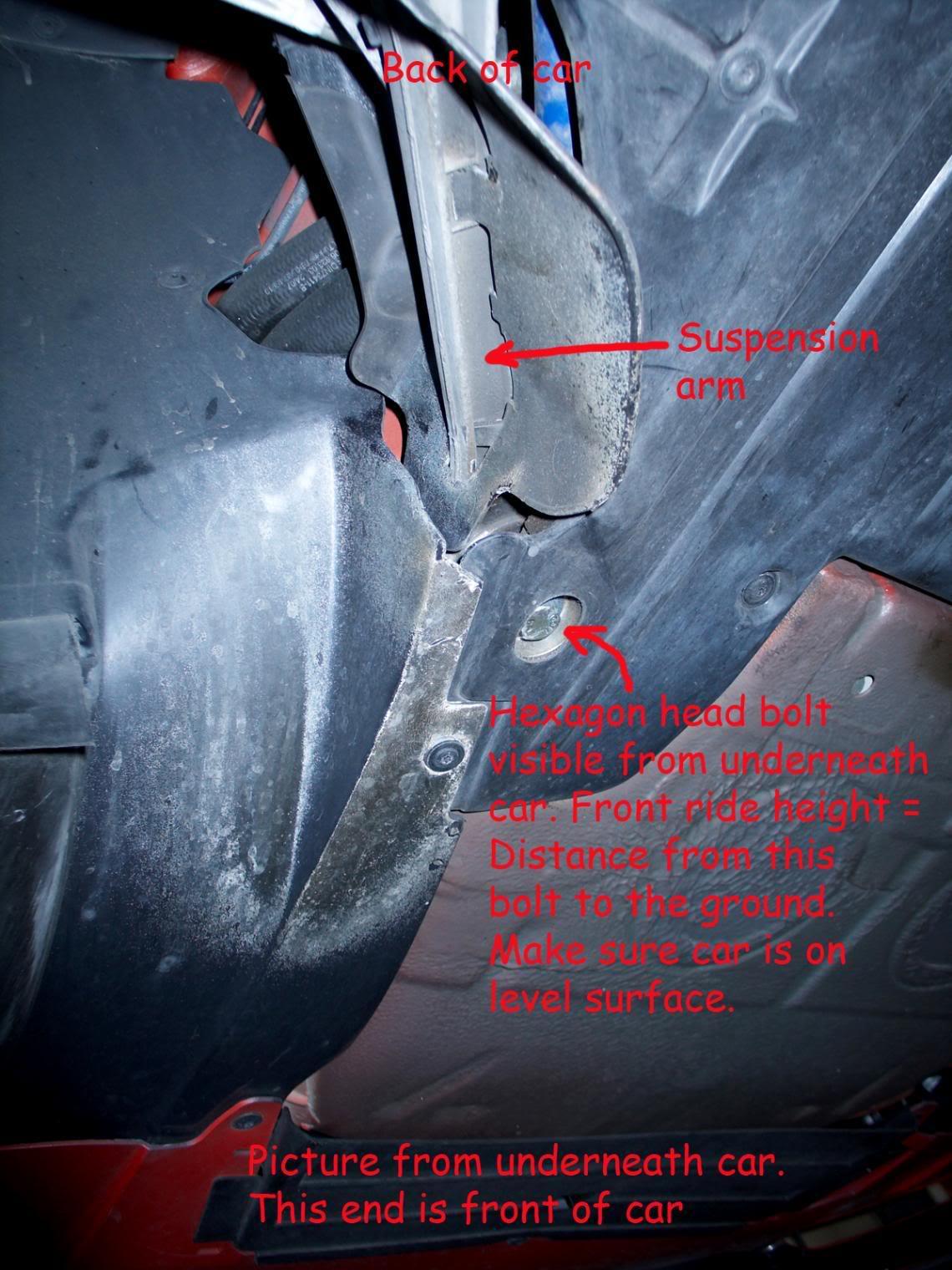
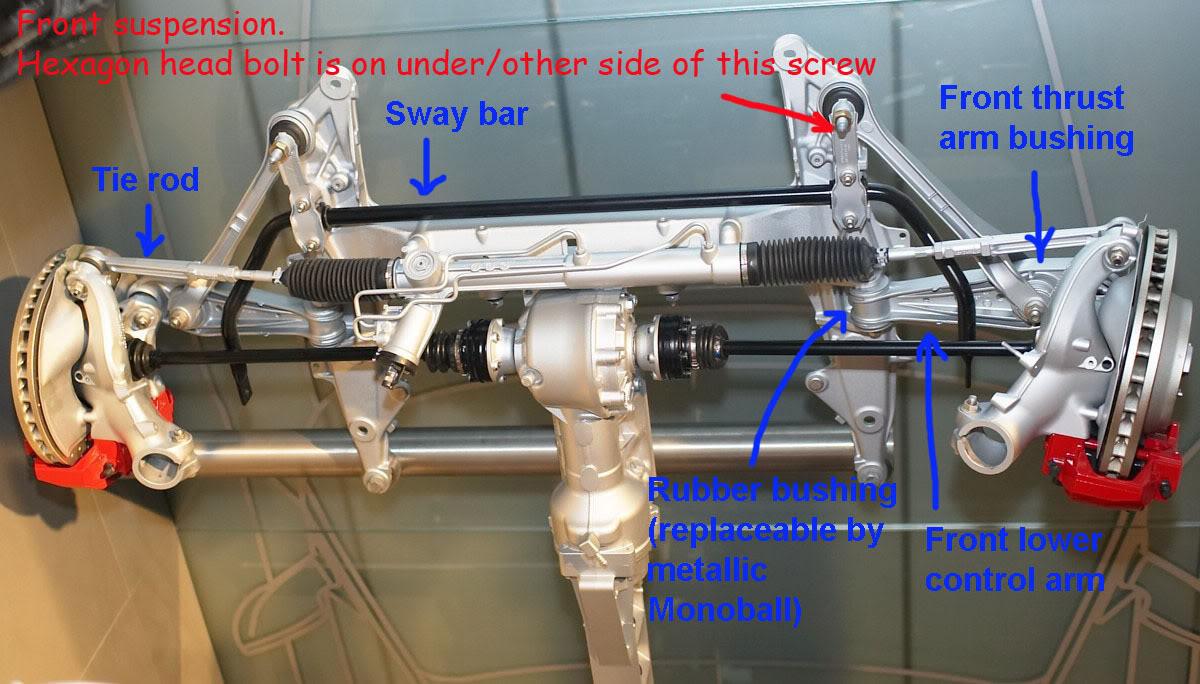
Rear ride height is from the locating bore, which is a round opening on the frame. That's it! Good luck and have fun measuring. ![]()

